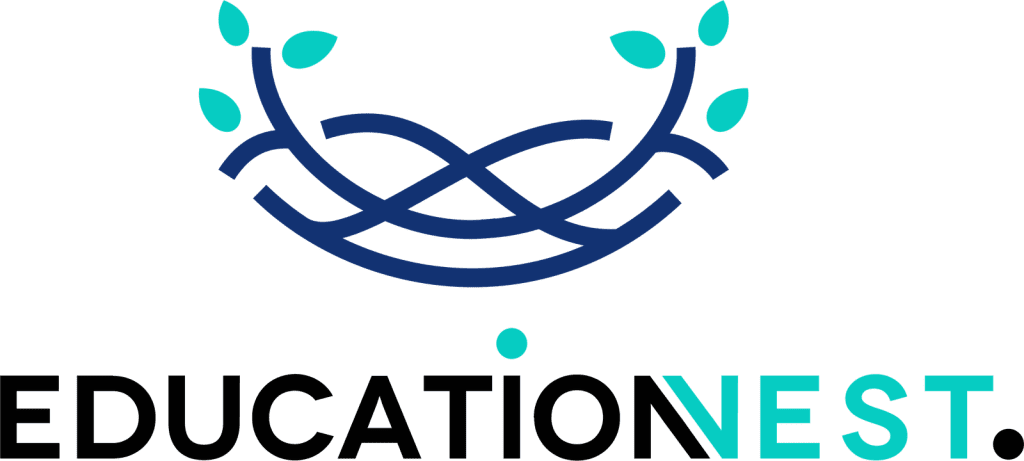Business models have been changing dynamically in recent times due to the severe market competition. Modernizing work practices and adopting efficient methodologies to maximize business potential is essential.
Employees are the most valuable assets for a company. They improve business productivity significantly. A recent Forbes report suggests that highly engaged teams improve profitability by 21%. Therefore, employees can contribute considerably to the overall business performance.
Education Nest can help you with personalized corporate training solutions in your business learning initiatives. It has a holistic approach to training and ensures the best pathway to foster growth and excellence.
As employees are crucial to your organizational success, you must implement effective frameworks to understand their collective and individual strengths, recognize gaps, and address them in time. Consistent workforce assessments can help you identify improvement areas and tailor training programs accordingly to promote professional growth and development.
So, how can you assess your workforce capabilities? What are the essential questions and strategies for effective workforce assessments? Read on to find out.
Questions to Ask
To uncover your workforce potential, you must be prepared with the right questions encompassing a multidimensional approach. These can provide crucial information and more profound insights about their foundational capabilities.
Here are some of the key questions that you must consider for effective workforce assessments:
What are the essential skills considering the current market situation?
Understanding what’s new in the market and what you need to adapt to stay relevant is crucial. As the business landscape changes dynamically, you must consider the shifting consumer demands and product or service expectations and what skills will help cater to these requirements efficiently. It will help you identify the market essential skills, and you can formulate strategies to help your workforce develop them.
How competent are your employees in their existing skills?
It’s not always about having the knowledge or certifications. What is more important is understanding if your employees can apply them in daily operational tasks and obtain the desired results. It will help you realize their competence in their existing skills and if they utilize their knowledge effectively.
How efficient is your workforce?
You need to evaluate the true efficiency of your workforce and deliver quality work without wasting time and resources. Determine individual contributions to the overall performance to understand who lacks where. It will help you identify the top and average performers, and you can plan development programs accordingly.
Are your employees confident about their skills and capabilities?
To understand your workforce’s capabilities, evaluate their confidence in their skills and capabilities. Check whether they contribute actively toward problem-solving, take innovative initiatives and new responsibilities, and tackle complex tasks. Confident employees perform their tasks efficiently and add more value to the organization.
How easily do they adapt to essential changes?
Adaptability is a must in today’s workplace, as changes are inevitable. Your employees must be open to constant learning and adjustments. Therefore, assessing whether they are flexible enough to learn new technologies and skills to improve their efficiency is essential.
For the different roles and positions, what are the ideal core competencies?
First, you must understand the core competencies required for different job roles within your organization. You should emphasize both hard and soft skills. Then, check whether your employees are skilled enough to deliver their duties responsibly without compromising the work quality.
Are there any performance gaps, timeline delays, and poorly executed projects?
When assessing your workforce capabilities, make sure to focus on critical areas like performance gaps, project delays, and poor execution and analyze the underlying causes of these problems. It will help you identify skill deficiencies, infrastructural issues, and other areas of improvement. You can implement corrective measures accordingly.
Assessment Strategies
You can combine different strategies to evaluate your workforce capabilities, such as:
Competency Mapping
Competency mapping is a systematic approach that first outlines specific attributes for different job roles and then analyzes the existing capabilities of the employees based on these defined expectations. It helps understand their strengths and weaknesses and determine if they match the desired competencies. You can identify skills gaps and address these shortcomings with targeted training and development opportunities.
Periodic Skills Assessments
You can conduct regular skills assessments for concrete insights into the employee’s proficiency and capabilities. These assessments can be in the form of online tests, on-spot tests, job simulations, work sample tests, peer reviews, and more. These act as metrics to evaluate the workforce capabilities and make informed decisions about further training endeavors.
Feedback and Surveys
Surveys and feedback are essential to understand the employees’ perspectives and provide a straightforward narrative of their upskilling and reskilling needs. These also reveal trends and patterns concerning any problem areas. You can develop a detailed action plan accordingly and address these concerns. Keeping anonymity makes these assessments more effective.
Performance Reviews
This traditional method of assessing workforce capabilities remains relevant in current times, too. It helps align employees’ roles with the organizational goals and visions, evaluate individual performances, and set future development plans for better results. Different performance review methods include qualitative and quantitative measures for a comprehensive understanding. The top ones are 360-degree feedback, 720-degree feedback, Rating scale, Psychological appraisals, Forced distribution method, Critical incident method, and more.
Elevate Workforce Capabilities for Best Business Results
For sustained success, businesses must regularly assess their workforce capabilities and address any gaps to navigate future complexities. Since employees play the most vital role in organizational growth and success, you must ensure they are well-prepared to handle real-world challenges and confidently cater to modern market demands. So, implement effective assessment strategies to foster a strong workplace culture for maximum productivity.
If you want to elevate your workforce capabilities and help them develop the market requisite skills, check out the wide range of corporate training courses from Education Nest. This platform offers comprehensive learning solutions, curated specifically considering the latest market trends and developments, and can help you with customized training options.
Reach out to us today for more details.
